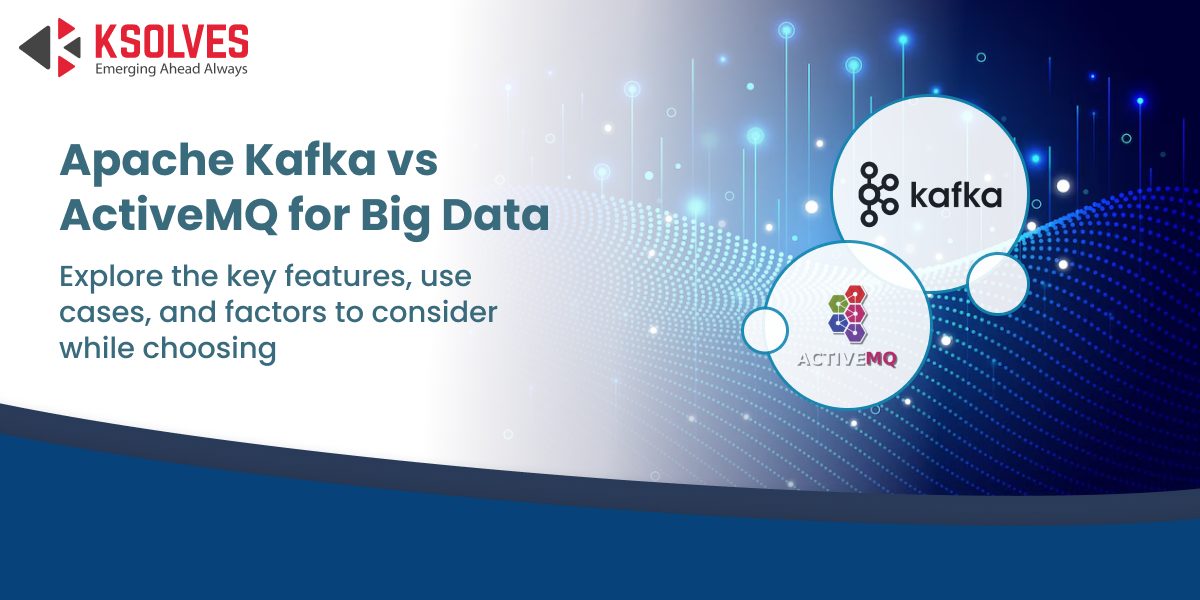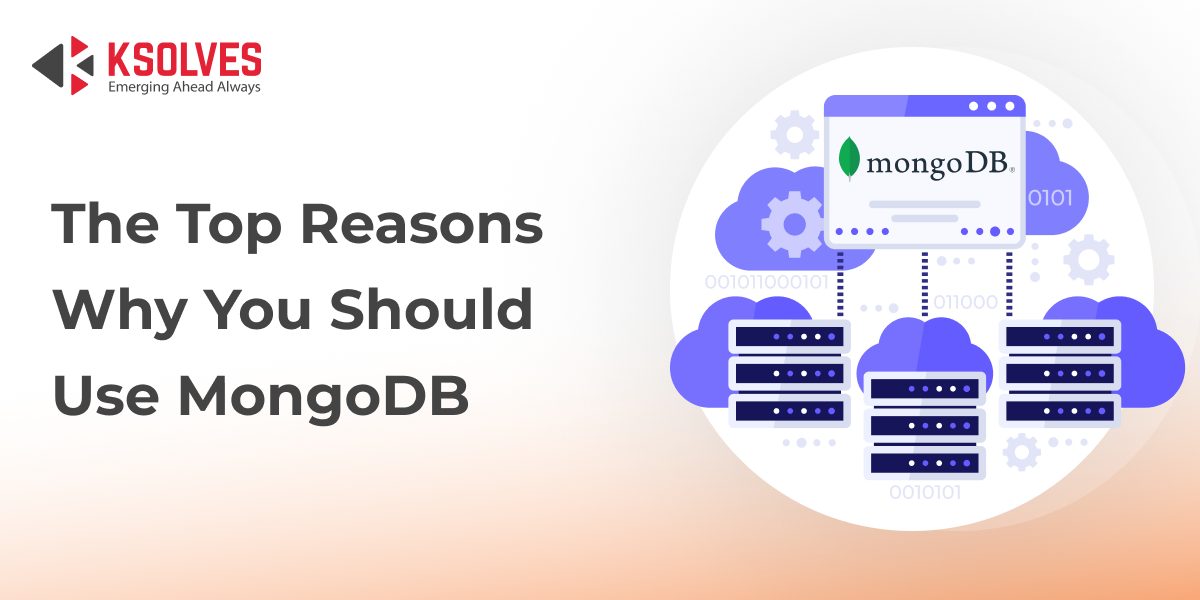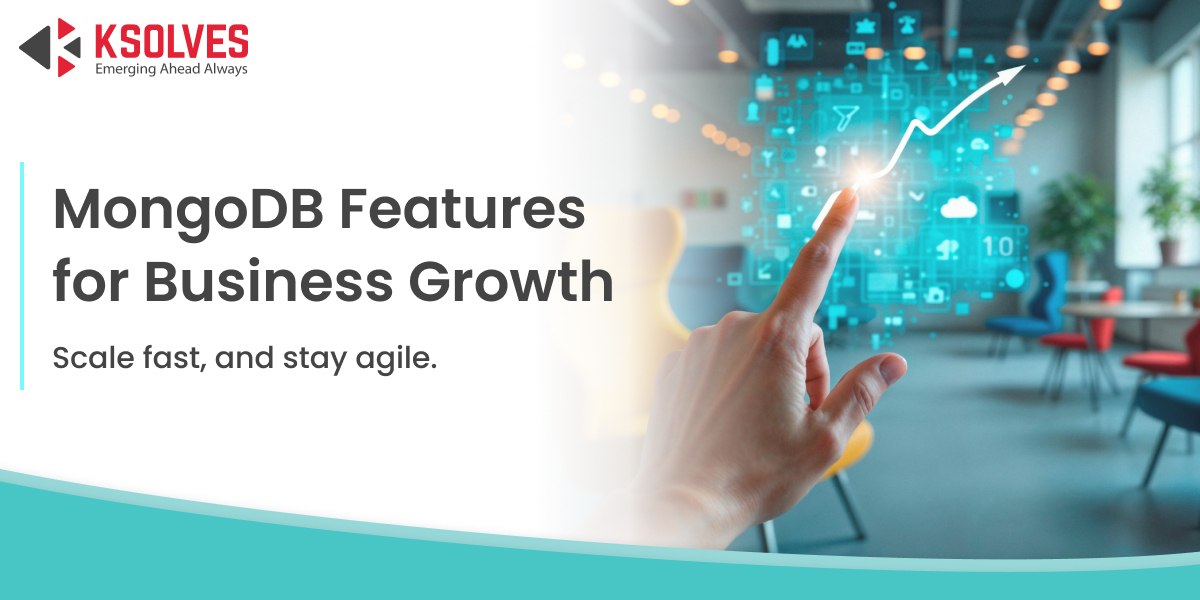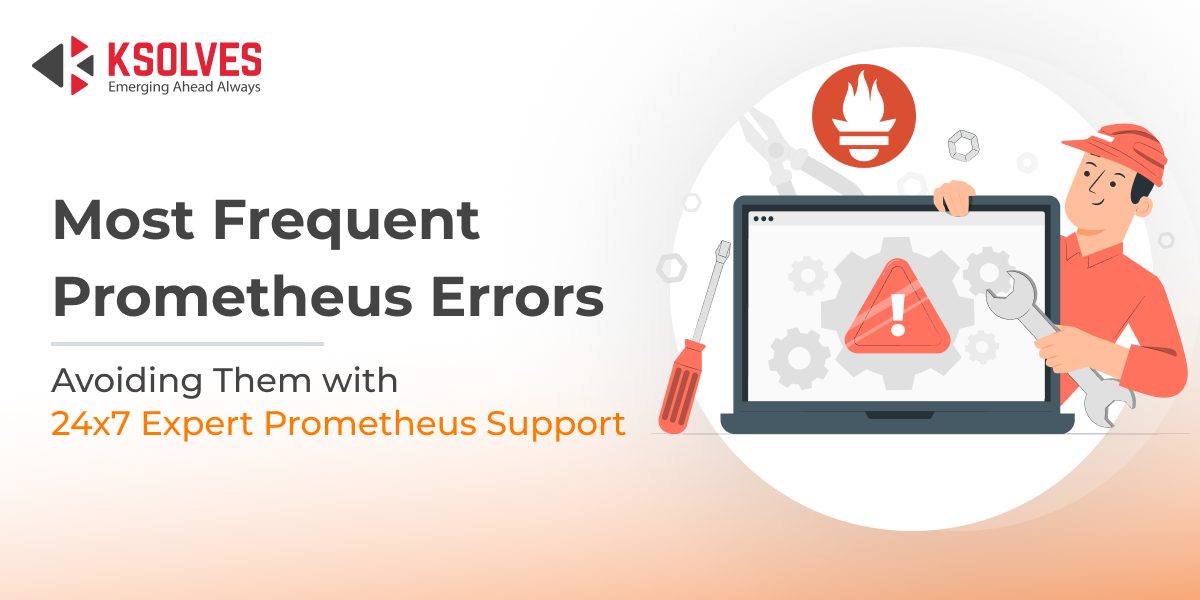Apache Kafka vs ActiveMQ for Big Data Applications
Apache Kafka
5 MIN READ
October 10, 2024
![]()

We all know that efficient data management and communication are pivotal to derive actionable insights and focusing on making strategic decisions. Messaging systems are essential for data communication and facilitate the exchange of data between diverse applications and services. With the exponential growth of data and the need for real-time processing, selecting the right messaging system becomes crucial for optimizing performance and ensuring scalability.
Apache Kafka and ActiveMQ are the most widely used messaging systems today, each offering distinct features and capabilities that cater to different needs.
In this article, we discuss how Apache Kafka vs ActiveMQ works, its key features, and its suitability for big data applications. Let’s dive deep into the specific capabilities of Kafka and ActiveMQ, compare their core differences, and provide insights into factors that should influence your choice between them. Whether you are looking to implement a high-throughput data pipeline or a reliable messaging solution for enterprise integration, understanding these systems’ strengths and use cases will help you make an informed decision.
Understanding Apache Kafka and ActiveMQ
Overview of Kafka
Apache Kafka is an open-source distributed event streaming platform designed for high-throughput, low-latency data streaming. Originally developed by LinkedIn and now part of the Apache Software Foundation, Kafka is renowned for its ability to handle large volumes of data in real time. It serves as a fault-tolerant messaging system with built-in stream processing capabilities, making it ideal for big data applications requiring real-time analytics and data pipelines.
Key Features of Kafka:
- Distributed Architecture: Kafka’s architecture is designed to be distributed across multiple servers, which allows it to handle massive data volumes and provide high availability.
- High Throughput: Kafka can process millions of messages per second with minimal latency.
- Fault Tolerance: Data is replicated across multiple nodes, ensuring durability and fault tolerance.
- Stream Processing: Kafka Streams API supports real-time processing and analytics.
Read More: Why and Where You Can Use Apache Kafka
Overview of ActiveMQ
ActiveMQ is considered an open-source message broker that directly integrates the Java Message Service (JMS) API. It is specifically developed by Apache to handle enterprise messages with robust reliability and instant support for multiple messaging protocols. ActiveMQ excels in scenarios where message delivery guarantees are crucial, making it suitable for traditional enterprise environments.
Key Features of ActiveMQ:
- Message-Oriented Middleware: Facilitates communication using queues and topics, ensuring reliable message delivery.
- JMS Compliance: Supports the JMS API, which is widely used in enterprise Java applications.
- Durability: Offers various persistence options to ensure message reliability.
- Integration: Provides integration with various enterprise systems and applications.
How Does Kafka for Big Data Applications Work?
Apache Kafka operates on a distributed business architecture consisting of producers, brokers, topics, and consumers. Producers send data to topics, which are managed by Kafka brokers. Topics are further divided into partitions, allowing Kafka to scale horizontally. Consumers subscribe to topics and read the data, enabling real-time data processing.
Features and Capabilities:
- Distributed and Scalable: Kafka’s architecture allows it to scale horizontally by adding more brokers to handle increased load.
- Durable Storage: Messages are stored on disk and replicated across multiple brokers to ensure data durability.
- Low Latency: Kafka’s design enables low-latency data transfer, crucial for real-time applications.
- Stream Processing: Kafka Streams API and Kafka Connect facilitate real-time data processing and integration with external systems.
Read More – Apache Cassandra 5.0: Shaping the Future with AI-Enhanced Data Solutions
How Does ActiveMQ Work for Big Data Applications?
When talking about ActiveMQ, it uses a message broker architecture where messages are sent from producers to queues or topics managed by the broker. Consumers retrieve messages from these queues or topics. ActiveMQ supports both point-to-point and publish-subscribe messaging models, making it versatile for various messaging needs.
Features and Capabilities:
- Queue-Based Messaging: Supports point-to-point messaging where messages are sent to specific queues and consumed by individual consumers.
- Topic-Based Messaging: Supports publish-subscribe messaging where messages are broadcast to multiple consumers.
- JMS Compatibility: Implements JMS standards, ensuring interoperability with Java-based enterprise applications.
- Reliability: Provides durable messaging with various persistence options to ensure message delivery.
Read More: Apache Kafka Security: Authentication & Encryption
Core Differences Between Apache Kafka vs ActiveMQ
| Feature | Apache Kafka | ActiveMQ |
| Architecture | Distributed, partitioned, log-based system | Centralized or clustered, message broker |
| Message Model | Streams (pub-sub) | Queues, topics (point-to-point, pub-sub) |
| Throughput | Very high (millions of messages/sec) | Moderate (lower throughput than Kafka) |
| Latency | Low latency for real-time stream processing | Slightly higher latency |
| Persistence | Persisted messages via logs | Persistence options with moderate durability |
| Scalability | Horizontal scaling across servers (clusters) | Limited scalability compared to Kafka |
| Fault Tolerance | High fault tolerance, automatic recovery | Fault-tolerant but less robust than Kafka |
| Integration | Seamless integration with big data systems (Hadoop, Spark) | Enterprise apps, legacy JMS-based systems |
| Stream Processing | Native support (Kafka Streams) | No native stream processing |
| Admin Complexity | Higher due to the distributed nature | Easier to manage and configure |
| Message Retention Control | Kafka retains messages based on time or size. | ActiveMQ deletes messages after consumption. |
| Replay Capability | Kafka allows consumers to replay messages | ActiveMQ is more of a traditional “fire-and-forget” system. |
Factors to Consider While Choosing Apache Kafka vs ActiveMQ
There are multiple factors to be considered while choosing Apache Kafka vs ActiveMQ that are mentioned:
1. Throughput and Latency
- Kafka: Ideal for high-throughput applications that require real-time data streaming and low latency. It handles millions of messages per second efficiently.
- ActiveMQ: More suitable for applications where message throughput is moderate and slight latency is acceptable.
2. Data Retention
- Kafka: Kafka retains the messages even after they have been consumed. It directly allows consumers to read the same message multiple times and provides features like replaying messages or processing them with different consumers that make Kafka suitable for all scenarios.
- ActiveMQ: When we talk about ActiveMQ, messages are removed from the queue immediately after they are consumed by a subscriber. This means that once a message is processed, it is no longer available for future consumption.
3. Scalability and Fault Tolerance
- Kafka: Offers robust scalability and fault tolerance. It can be scaled horizontally by adding more brokers, and data is replicated across brokers to ensure high availability.
- ActiveMQ: Provides clustering for fault tolerance but does not scale as efficiently as Kafka. It is more suited to smaller-scale deployments.
4. Integration with Big Data Ecosystems
- Kafka: Integrates seamlessly with big data tools such as Hadoop, Spark, and Flink, making it an excellent choice for big data pipelines and real-time analytics.
- ActiveMQ: More focused on traditional enterprise applications and integration with JMS-based systems. It lacks the native support for big data ecosystems that Kafka offers.
5. Ease of Use and Administration
- Kafka: It requires a more complex setup and administration due to its distributed nature. However, it provides powerful features for large-scale data processing. Kafka helps you to keep the messages after consuming them. Also, we can opt for some open-source UI tools for visualization and monitoring.
- ActiveMQ: Easier to deploy and manage, making it suitable for enterprises that need a reliable messaging system without the complexity of Kafka. ActiveMQ provides its GUI to visualize message details.
Conclusion
We have taken a deep understanding of Apache Kafka and ActiveMQ, the final decision will be as per the specific requirements and use cases. In summary, Apache Kafka is notable for its high throughput capabilities, low latency performance, and smooth integration with big data environments. It is ideal for applications requiring real-time data streaming, large-scale data processing, and scalable architecture. Kafka’s ability to handle millions of messages per second while maintaining fault tolerance makes it perfect for complicated big data applications and real-time analytics.
On the other hand, ActiveMQ is a dependable option for classic enterprise messaging requirements. Its conformance to JMS standards and ease of usage makes it appropriate for scenarios needing reliable message delivery and interaction with business systems. ActiveMQ is ideal for contexts where message reliability and ease of management are more important than managing large amounts of data.
Finally, the best option relies on whether you value real-time processing and scalability (Kafka) or dependable enterprise messaging and simplicity (ActiveMQ). Understanding your individual objectives and use cases allows you to choose the messaging system that best meets your demands.
After Choosing – How Does Ksolves Help with Kafka and Provide the Right Guidance?
Ksolves offers expert guidance in implementing and managing both Kafka and ActiveMQ systems. Our Apache Kafka Implementation services include:
- Implementation: Setup, configuration, and optimization for high-throughput, real-time data applications.
- ActiveMQ Deployment: Reliable setup and management of enterprise messaging systems.
- Consultation and Support: Tailored solutions and ongoing support to ensure optimal performance and integration with your existing systems.
FAQs
-
When to Use Apache Kafka Instead of ActiveMQ?
Utilizing Apache Kafka for different scenarios needs high-throughput data streaming, real-time analytics, and integration with multiple big data technologies. Kafka expert in handling massive volumes of data with minimal latency.
-
Which is Better: ActiveMQ or Kafka?
Apache Kafka is something worthwhile choosing for big data applications that provide real-time data processing due to its scalability and performance. ActiveMQ is preferred for traditional enterprise messaging needs where JMS compatibility and reliability are crucial.
-
What is ActiveMQ Used For?
ActiveMQ is used for implementing reliable, message-oriented middleware in enterprise applications. It supports various messaging models and protocols, providing robust solutions for point-to-point and publish-subscribe messaging within enterprise environments.
-
Can Kafka handle both real-time and batch processing?
Yes, Kafka has the ability to support both real-time streaming and also the batch processing. Kafka’s distributed architecture allows users to immediately process the data and manage the long-term storage by enabling batch analysis from stored business logs.
-
How is Kafka different from traditional messaging systems?
Kafka is designed specifically for managing high throughput, scalability, and flexibility with a distributed log architecture. Like when we compare it with traditional messaging systems, Kafka retains its messages for a longer time and supports data reprocessing. Even it also works on handling the large-scale data streams more effectively.
-
Is ActiveMQ better suited for smaller, enterprise-level messaging needs?
In short, we can say yes, ActiveMQ is considered an ideal choice for smaller enterprises because of its simplicity, reliability, and JMS compliance. It’s centralized making deployment and management effortless and makes it a great choice for organizations with less complex requirements. Most importantly, it does not match with Kafka’s throughput and excels in reliability and system integration.
![]()




AUTHOR
Apache Kafka
Atul Khanduri, a seasoned Associate Technical Head at Ksolves India Ltd., has 12+ years of expertise in Big Data, Data Engineering, and DevOps. Skilled in Java, Python, Kubernetes, and cloud platforms (AWS, Azure, GCP), he specializes in scalable data solutions and enterprise architectures.
Share with